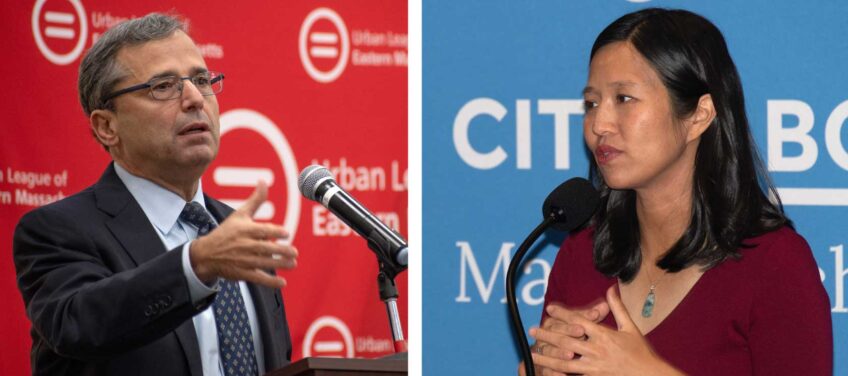
The Boston Redevelopment Authority has given the green light to a 40-unit Blue Hill Avenue residential development despite the objections of neighbors and Impact Advisory Group members who raised concerns about density, traffic and the developer’s questionable record of hiring minority contractors on previous jobs.
The Community Builders’ proposed Clarion building, a four-story apartment complex to be built on the large vacant site between Quincy and Holborn streets in Roxbury, will contain a mix of market rate, moderately affordable and deeply affordable units as well as retail space, limited parking and a public plaza.
A spokeswoman for the company, Stephanie Anderson Garrett, said the TCB has responded to community concerns about the project.
“We hosted and participated in 20 meetings with the community,” she said. “As a result, the valuable community input we received influenced a number of the design choices.”
Garrett said TCB raised the percentage of market-rate and moderately affordable units, expanded retail space, modified access to its parking lot and included a public plaza, all in response to community concerns.
But Laura Younger, a member of the Holborn, Gannett, Gaston, Otisfield Betterment Association, said the developer has not responded adequately to neighbors’ concerns about the size and scope of the project.
“I’m highly disappointed to learn that TCB presented The Clarion development before the BRA Commissioners without a completion of the Article 80 Process,” she said, referring to the large project review guidelines written into Boston’s zoning code.
The neighborhood association sent a letter to the Boston Redevelopment Authority requesting that its board not approve of the project.
Younger and other neighbors say the development, sited across the street from an early learning center and within blocks of the new location for the Bridge Charter School and Boston Latin Academy, would exacerbate traffic on an already congested stretch of Quincy Street. She questioned the BRA’s approval of the project, despite what she says was an inadequate review process.
“We’ve made progress over time in Boston around meaningful resident participation in development, and this feels like a step backwards,” she said. “I’m optimistic that the door is still open to continued dialogue about the serious community concerns that were expressed to TCB, DND and the BRA.”
The Community Builders is a Boston-based firm with a 45-year history of developing and managing affordable housing throughout the United States. One of its more recent projects, 225 Centre Street, sparked controversy when the firm consistently failed to meet city and community-established hiring goals for minorities, Boston residents and women and for minority- and women-owned business enterprises (MWBE).
“They did the absolute worst job I’ve ever seen,” said Rodney Singleton, who headed that project’s Impact Advisory Group, a BRA-appointed committee of neighbors that represents the community’s interests in development projects. “Their overall numbers for Boston minority business utilization were less than 1 percent.”
Garrett disputed Singleton’s assertion, although she acknowledged the project fell short of the city’s requirement that 50 percent of construction jobs go to Boston workers, 25 percent to minorities and ten percent to women.
“We did not meet our goal, although we surpassed the average of all developers in Boston,” she said. “We believe what we’ve learned has made us better prepare to ensure we meet or exceed the goals we set for ourselves and the goal set by the city.”
Singleton said TCB tried to satisfy the minority participation numbers by using a Portuguese-owned subcontracting firm from Rhode Island and another firm that was not certified as minority-owned by the State Office for Woman and Minority Business Assistance.
“They claim they had 18 percent minority participation,” Singleton said. “They never came close to it. They should be barred from building projects in Boston.”
Younger said her neighborhood organization will continue to apply pressure to TCB if they move forward with the project.
“My neighbors in HGGOBA are committed to our goals for this development,” she said in an email. “Including a mixed income component (rooted in an anti-displacement plan), an appropriate size, achieving community standards for MWBE on construction and permanent jobs, safety of our families addressed around security and traffic (especially during school time), and that the businesses in the commercial space add to the positive economic development that we so sorely need.”







